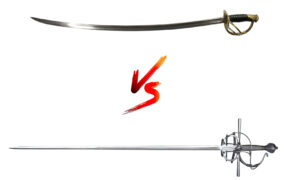Our content features commercial links to our products, committed to transparent, unbiased, and informed editorial recommendations. Learn More
Rapier Sword 101: Exploring History, Types and Use
NO AI USED This Article has been written and edited by our team with no help of the AI
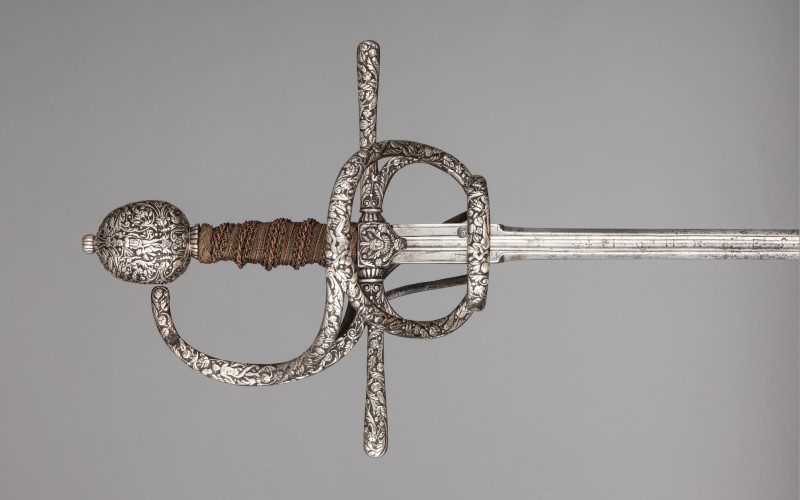
Most recognized for its long, slim blade, the rapier served as a civilian weapon throughout the 16th and 17th centuries, but it gradually became more associated with the court, dueling, and fashion. The swept-hilt and cup-hilt rapiers are perhaps the most popular, but there are a wide range of different styles.
Let’s explore the history of the rapier, its different hilt types, and what sets it apart from other European swords.
Characteristics of the Rapier Sword
Rapiers vary in shape, size, and hilt designs, but generally, they are thrusting swords with a very narrow and sharp tip.
Here are the unique characteristics of the dueling
Metal and Construction
Historical rapiers were stiff and rigid, without being too heavy or thick. In the 16th and 17th centuries, the Toledo swordsmiths forge-welded iron strips around a softer steel core and then quenched and tempered the blade. Some rapier blades also originated from Solingen, a well-known German city that exported them worldwide.
Long rapiers today usually feature high carbon steel blades. Even though replicas tend to have high-quality construction, they are often too flexible or wobbly. Many fencers prefer these blades as a practice weapon, so they would easily bend without breaking. However, a flexible blade construction may also distort rapier fencing techniques that originally used rigid blades.
Blade Appearance
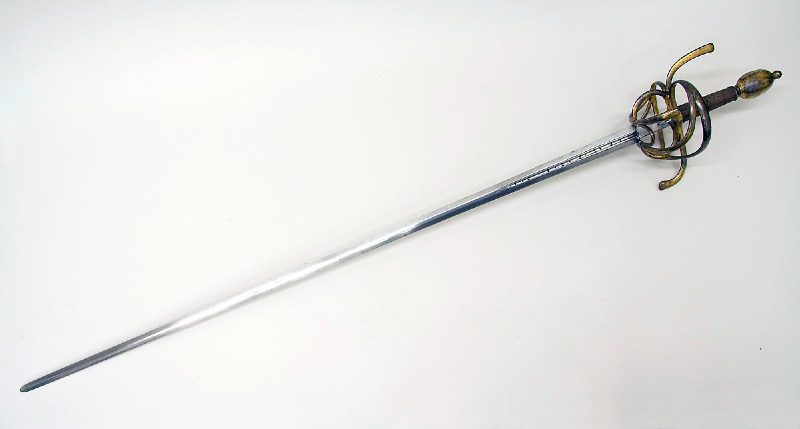
As a thrusting
The rapiers we know today have thick, narrower blades and usually feature a ricasso—an unsharpened blade portion above the hilt. Some feature the maker’s name inscribed on the blade while others have religious invocations. One example is the Christus Imperat rapier with the Latin inscription that means Christ Commands.
Size and Length
Rapiers vary in size and length, but they are generally well-balanced for swordplay. In Ridolfo Capoferro’s rapier fencing, the
Sword Mounting
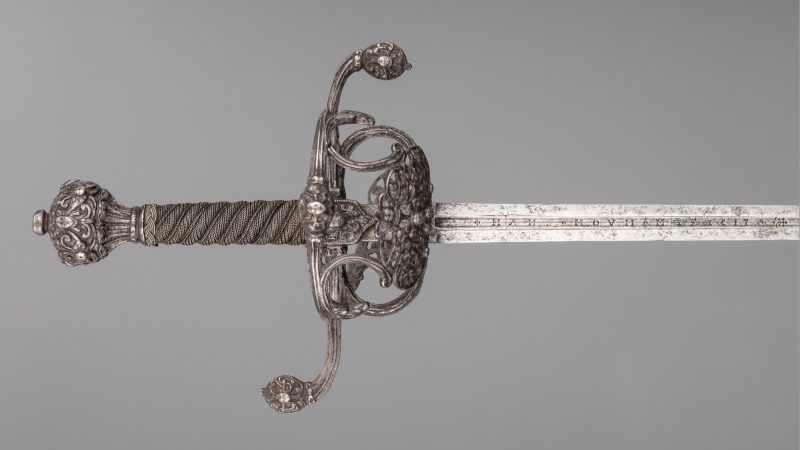
Most rapiers had elaborate hilt and hand guards, usually combinations of loops, cups, and shells. Early 17th-century Italian rapiers featured finger guards, sometimes called branches or arms, to protect the fingers gripping the ricasso. Some swordsmen also utilized the pommel for striking. The dueling
The small hand guards on modern fencing swords—foil, épée, or sabre—protect the hand from thrusts, but the elaborate hilt on the rapiers was designed to prevent the opponent blade from counter-thrusting. However, the swept-hilt design was not exclusive to the rapier, as other 16th-century swords like broadswords and reitschwerte had swept-hilts.
Different Types of Rapier Hilts
Rapiers had a variety of hilt types, ranging from swept styles to cups and dishes. While these dueling swords are defined by their blades rather than their hilts, most collectors today classify them according to the type of
1. Swept-Hilt Rapier
The name swept hilt comes from its design, sweeping in a graceful curve from the ricasso to the pommel. However,
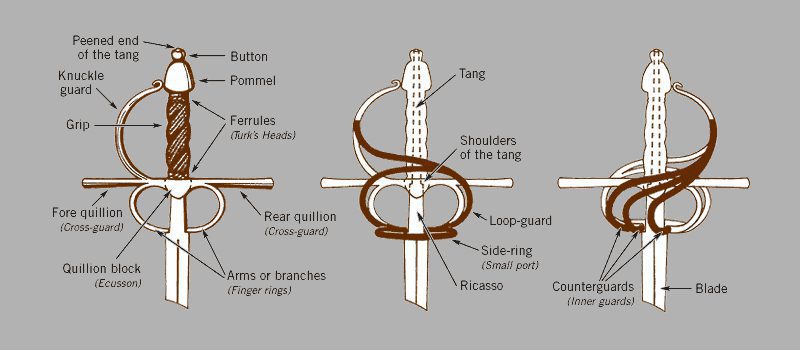
Quarter Hilt
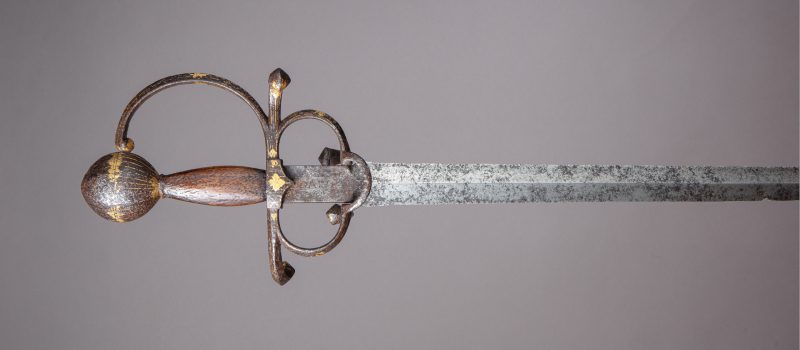
In a basic hilt, the
Half Hilt
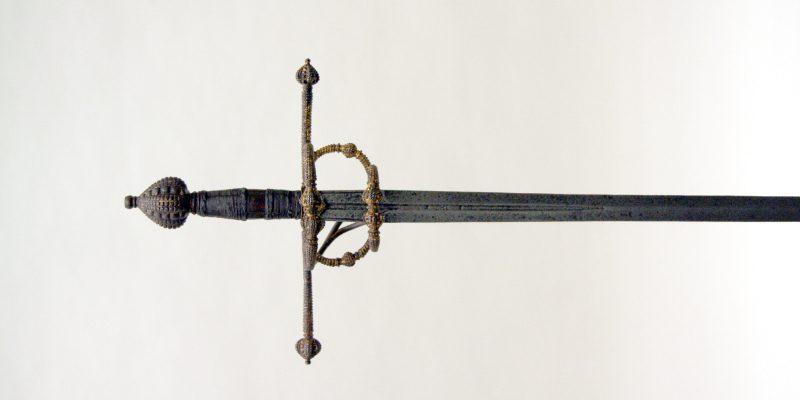
Like the quarter hilt, the half hilt has the traditional cross, sometimes sweeping quillons or crossguard arms. It also has finger rings and a lower side ring joining them, but the side ring on the crossguard makes it a half hilt. So, it has two side rings—an upper ring on the crossguard and a lower side ring on the ricasso.
Three-Quarter Hilt
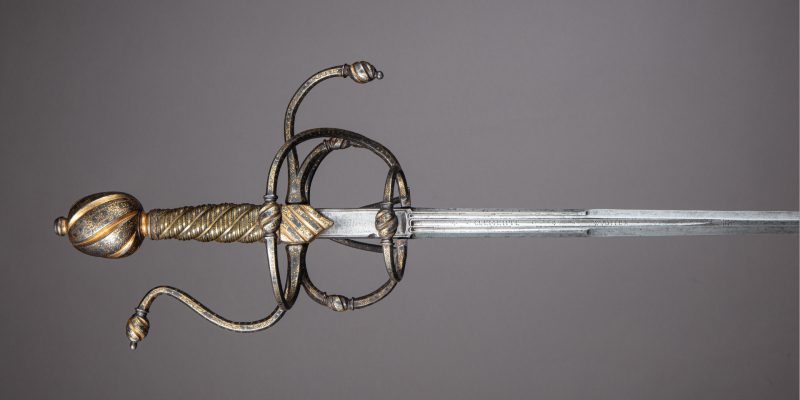
A three-quarter hilt has two—or three side-rings—but one of its quillons sweeps upward and becomes longer to form a knuckle guard. As the name implies, the knuckle guard is an extension of a
Full Hilt
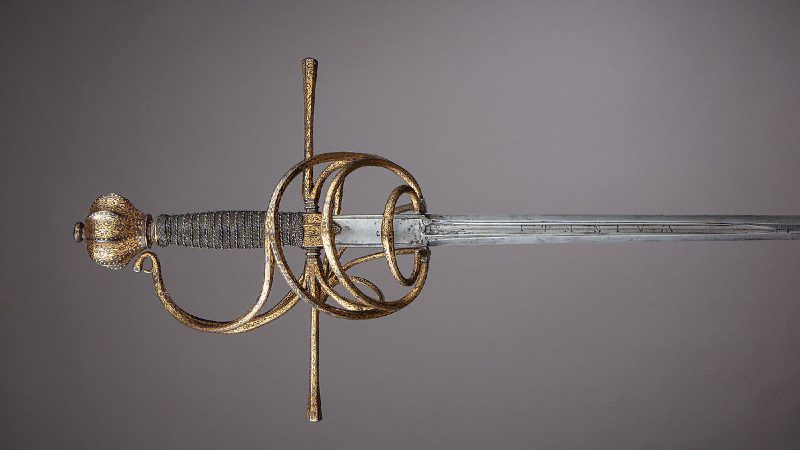
A full hilt has a separate crossguard and a knuckle guard, including finger rings and multiple side rings. It is the most elaborate swept-hilt design, in which the bars sweep upward in a curve from the ricasso to the pommel.
2. Pappenheimer-Hilt Rapier
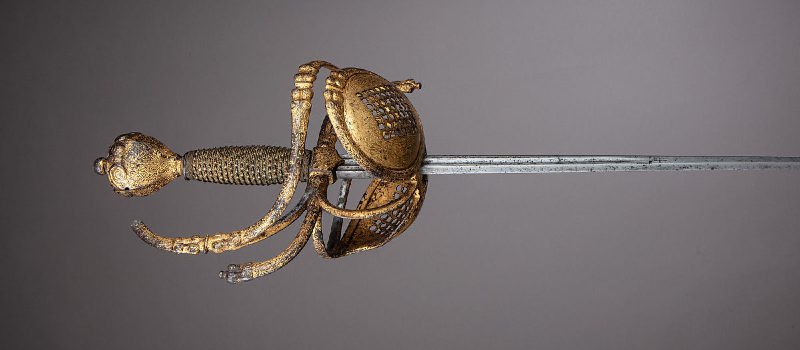
The Pappenheimer hilt derived its name from Gottfried Heinrich, count zu Pappenheim, a German commander in the Thirty Years’ War. It features two pierced shell guards, which gave additional protection for swordsmen. Some designs have three rings and shell hilt, while others are simpler, with only one large ring filled with a shell. In some variations, the back shell is smaller than the front one.
Its appearance in several Dutch paintings and works of art suggests that the hilt design probably originated from the Netherlands. Some historical swords also belonged to Swedish king Gustavus Adolphus and his officers. Others also feature Italian decorations on the shells and pommels. It remains unclear why the hilt type acquired its name from the German leader, but it developed during his time.
3. Loop-Hilt Rapier
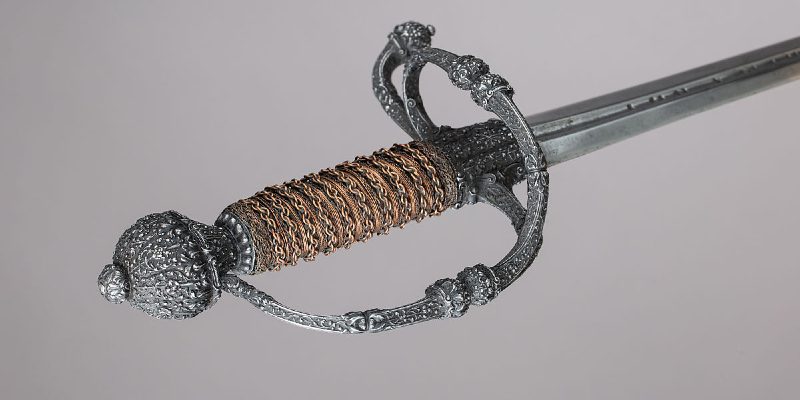
The loop hilt only features a knuckle-guard, a loop guard, and forward and rear quillons. The loop guard runs from the bottom curve of a knuckle guard to the inner part of the rear quillon. Some designs include a small shell under the loop guard. Rapiers with a loop hilt usually had full-length blades, which likely served as dress swords.
4. Dish-Hilt Rapier or Flamberge
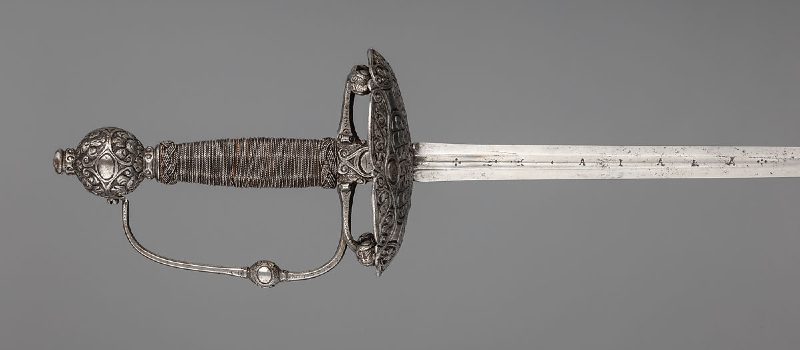
Sometimes referred to as the transitional rapier, the dish-hilt rapier has a dish-shaped guard, a characteristic feature of the later smallsword. Its main difference from the smallsword is that it is similar to the rapier in size, even though it is lightweight and flexible.
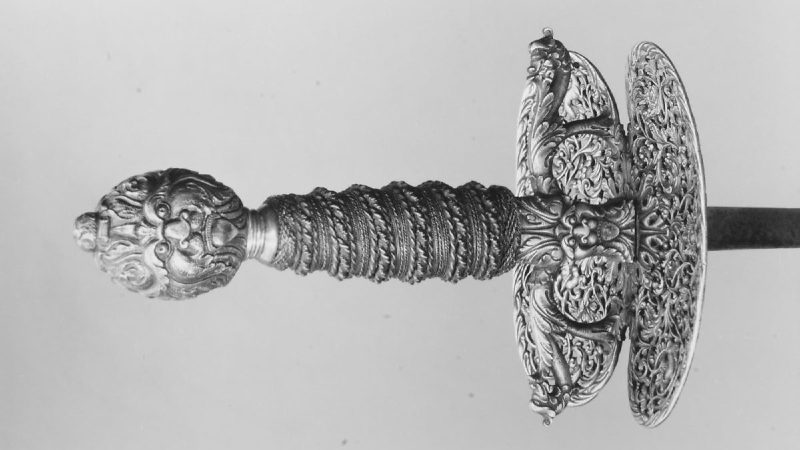
Most designs have a simple hilt, oval pommel, and short quillons. It probably originated from France, designed for fighting duels. Some dish-hilt rapiers also had two flat oval shells instead of a dish-shaped guard.
The dish-hilt rapier has also been called the flamberge, given by Egerton Castle, an early practitioner of historical fencing. However, the term was inappropriately applied. In the late 19th century, there was no term that could describe the hilt type, so he used flamberge to set it apart from other rapiers. He probably got it from the expression mettre flamberge au vent, meaning to draw one’s
5. Cup-Hilt Rapier
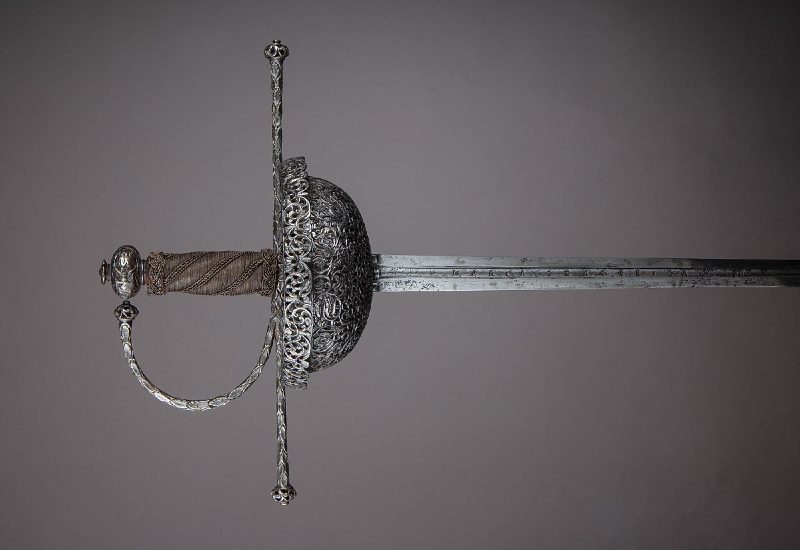
In Spain, rapiers became fully enclosed, creating the cup-hilt guard. The swordsmen also utilized the so-called Romepuntus flap on the cup for trapping the opponent’s blade. Most cup hilts were elaborate, usually with pierced and chiseled metalwork. However, ones that served as a fencing piece rather than a dress
Facts About the Rapier Sword
In the 16th century, the rapier served as a weapon for self-defense and dueling, designed for thrusting, as opposed to the cutting and thrusting style of swordplay.
Here are the things you need to know about the dueling
The name rapier comes from the Spanish espada ropera or
In the late 15th century, Spaniards began to carry swords without armor worn with an ordinary civil dress and called them espadas roperas. By the early 16th century, the tradition spread across Europe, and the French called them la rapière. Such swords became known in English as rapiers, referring to the slender thrusting
Early fencers used a parrying dagger with a rapier
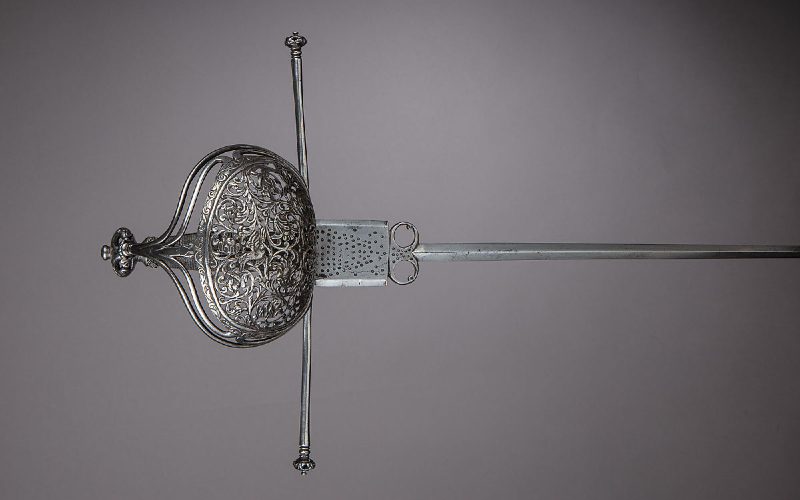
In the early 16th century, fencers used the rapier solely for attacking—not for blocking. Lacking the shield or armor worn in battle, they warded off an attack through a dagger held in their left hand. Other means of defense included using a small shield, also known as a buckler or a cloak wound around the arm. By the mid-17th century, most of Europe preferred parrying with the rapier
The rapier and the parrying dagger often matched as a decorative set.
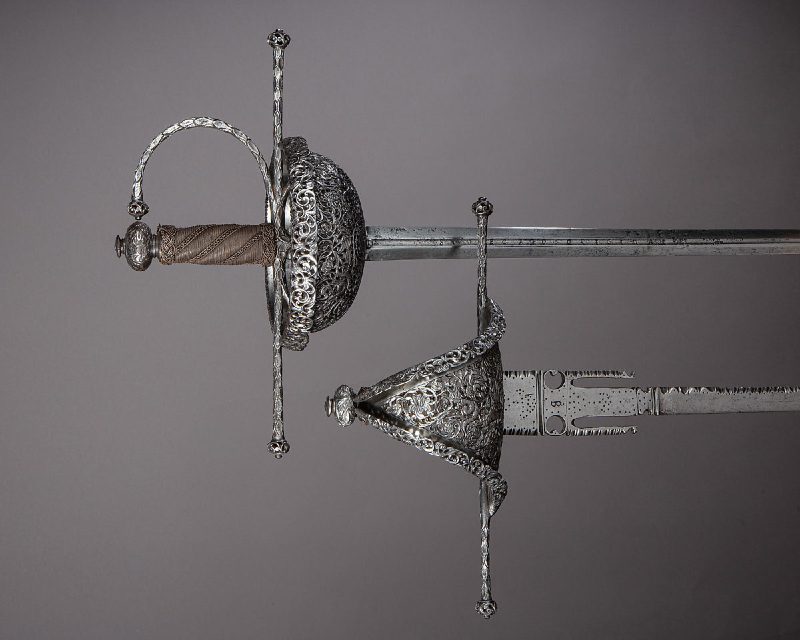
In Spain and southern Italy, parrying daggers survived into the 18th century. The left-hand Spanish dagger, the maingauche dagger, has a triangular knuckle guard and wide quillons to defend against cutting strokes. These daggers often matched the cup-hilted rapiers with chiseled steelwork.
The rapiers were designed for unarmored civilian combat.
Renaissance cities had narrow streets and alleys, so a long thrusting
In Europe, rapier was the duelist’s weapon of choice.
Dueling, the settling disputes through individual combat, has ancient origins. The Vikings engaged in einvigi or trial by combat, where fighters fought to the death. Dueling thrived from the Middle Ages until the late 19th century in Europe, where rapiers and smallswords served as dueling weapons. The rapier originated in Spain and Italy but eventually spread throughout Western Europe.
Development of the Rapier
The rapier evolved from the mid-15th century arming sword, which had developed a more complex hilt than the typical medieval cross hilt. In the 1460s, the Spaniards of the Iberian peninsula used the
Parrying with the blade would be more efficient if the forefinger passed the outside of the crossguard than the inside, so they added an extra guard—a small ring or branches—in front to protect the finger.
By the 16th century, a rapier suited for thrusting emerged, developed by the Italians around 1550 based on the fighting style of the Spaniards earlier in the century. It was only suitable for civil combat on foot, not for warfare.
The Decline of the Rapiers
During the late 17th century, long rapiers gradually fell out of use. Shorter than a rapier, the smallsword became the preferred civilian weapon. It often had a stiff triangular blade, but its variation, the colichemarde, had a broad forte, narrowing abruptly at the middle of the blade. The smallsword had a less decorative hilt and was easier to carry due to its shorter length.
Originally used like a rapier, the smallsword also served as a dueling
Conclusion
Rapiers come in all shapes and sizes, but they all have the characteristic slender and rigid blades designed for thrusting. In the 1600s, they served both as self-defense and dueling weapons. In modern times, it remains relevant among the practitioners of renaissance rapier fencing and collectors.

